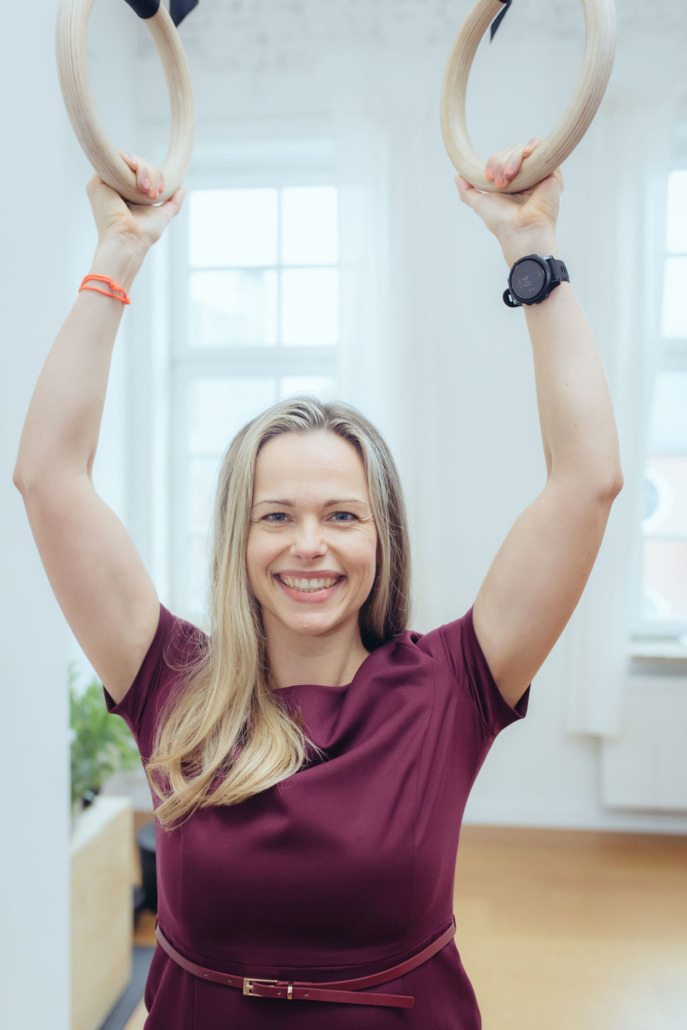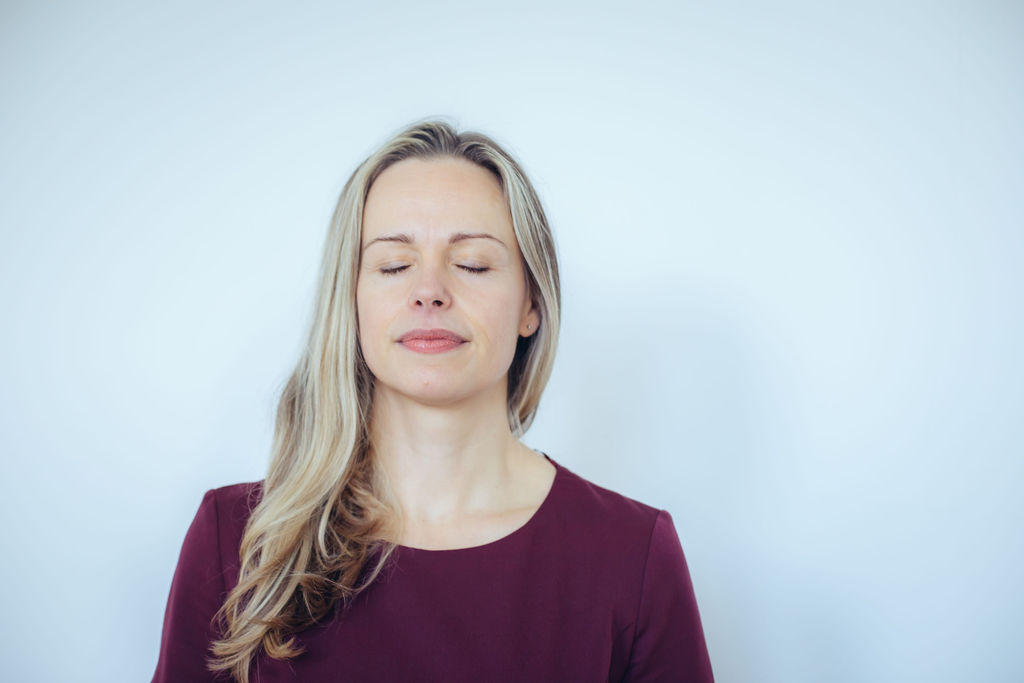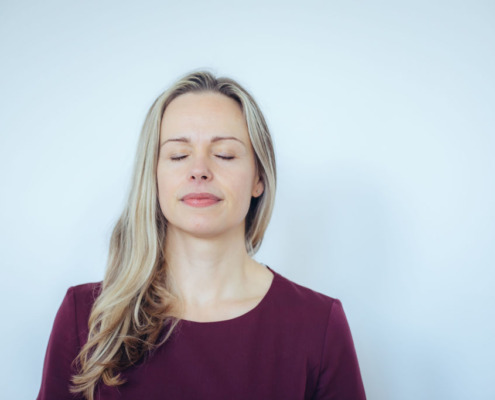Enhance your creativity and innovation through evolving your sensory joy
Have you ever found yourself in the following situation? You take a turn in the wood and out of the blue a brilliant idea crosses your mind that you really can’t keep for yourself but need to share with somebody. Whether that’s a team or your friends doesn’t matter, you’re burning with creativity and innovative energy. You need to jot those ideas down on the spot because you’re 100% sure that they will vanish into thin air otherwise.
But where do all these ideas suddenly come from? At work, you find yourself musing over something for days without hatching an idea. And now you’re bubbling over with ideas that come out of nowhere.
This is simply because deliberate downtimes are a source of inspiration. Looking at our current daily work routine, regardless if this takes place in the comfort of your home or in the office, for the most part, it’s a question of faster, higher, further. Getting more work done in less time, standing in for an absent colleague without blinking an eye or being permanently available as an entrepreneur – that’s exhausting. It drains our energy and subjects us to stress. We feel exhausted from constantly being in fight-or-flight mode.
Timeouts: Deceleration, reflection, connection
If that sounds familiar, then now is the right time to slow down. To enjoy life again. To find your inner peace. Especially during the cold season. Light a scented candle and take your time reading this article. The timing couldn’t be better.
From a spiritual perspective, autumn is a great time to both reflect and look inward (Link in German). You can also apply this to yourself and use it to rejuvenate and rediscover the connection to yourself.
One way to achieve this, for instance, is to create conscious oases of tranquillity and joy. Providing the space for yourself gives the mind and body time to reflect on what’s been going on over the past few months. It also leaves you with renewed strength and new ideas. We often underestimate that our body and mind need this time of reflection and connection to further advance.
In my work as a systemic coach and also through my own personal experiences, I can confirm that timeouts for reflection and integration are necessary to rejuvenate. I experienced first hand just how hugely important it is to incorporate rests and moments of joy into my daily routine. Because these periods of recovery are necessary for both the body and immune system to be able to reduce stress in our everyday lives. The same holds true for (competitive) sport.

Photo credit: Sandra Birkner Photography
It’s certainly not advisable to run a marathon on the hoof. Quite the contrary. You rather train in small steps to give your body sufficient time to grow into the extremely challenging distance of 26.2 miles (42.16 km). This is the only way it can remain healthy and act with you as a team. If you’re training for a marathon, finding the right balance between activity and rest is essential for your performance. This is borne out by my many years of experience as a triathlete: The body needs recovery time (Link in German) – the same applies to our psyche.
What timeouts have to do with “being able to deliver”
We live in a performance society. Personally, I’m not a fan of this term. Instead, I believe that on the way to a knowledge society, we should slowly replace efficiency with sensory joy and “perform” with “deliver”.
Because if you can really delight in an experience and give yourself regular moments of rest and reflection, you can also deliver. By that I don’t mean slogging your guts out 24/7 and then spending a week on the couch, totally strung out. Delivery is more about being in the zone, i.e. intrinsically motivated to perform and get things done – as long as it’s good for you.
Because it makes all the difference whether you feel drained and dread the week ahead on Sunday, or whether you incorporate regular, consciously experienced timeouts into your daily routine, and start the week with a feeling of “Thank God it’s Monday“. Moments in which you recharge your batteries and feel good with all your senses.
Many people associate having a rest with idleness. But breaks are not “inactivity”. Timeouts are a form of productivity. It just takes place on a different level. You can regain strength by actively designing timeouts; by deliberately taking a break, instead of letting a spare moment happen when you have nothing on the agenda.
“Even taking breaks is a form of productivity”
Let me briefly tell you how I gained all these insights, and pass them on to my coachees today.
How I became antifragile through sensory joy coaching
There was a time when I faced a serious downtime healthwise and was totally inefficient. At that time, I was still a classic IT consultant, but due to various circumstances, I wasn’t at all happy in this role. Coaching helped me overcome this dark phase. I think it was the second session in which we found out my meaning of life. That way, I discovered that I wanted to become a coach myself and guide international teams to deliver. Bringing people and all their complex personalities together to create something new and unique.
After my recovery, I intensively pursued the subject of resilience and later also antifragility.
According to Wikipedia resilience is a process in which people respond to problems and changes by adapting their behaviour. In contrast, author Nicholas Taleb describes antifragility as far more sustainable: “Antifragility is beyond resilience or robustness. The resilient resists shocks and stays the same; the antifragile gets better and better […] Antifragility has the unique quality of enabling us to embrace the unknown, to tackle something – and thrive – without understanding it.”
Within the vocational context, my discoveries posed additional exciting questions for me. For example, what role do resilience and antifragility play regarding the learning ability of organisations? So, I researched further and kept coming across the term ‘well-being‘.
“We develop in the direction of the questions we ask.”
In this context, I turned my attention to relevant further training opportunities and in the course of my research, I lit upon the subject of sense of joy. One of my findings was that developing a joyful attitude to life is indeed the basis of performance. For this, I’m not referring to a meritocratic mindset. Instead, it’s about heeding your power of action and getting into gear with more innovativeness and creative impulses. Both privately AND professionally. It was in this phase that I discovered the training of Sensory Joy Coaching which I completed at Jutta Kamensky in Nuremberg.
The idea of “learning to feel joy as a means to safeguard mental health” fuelled my enthusiasm. If a sense of joy is the foundation of performance in a highly complex world, then joy is also a key to dealing with complexity in an antifragile way. At least, becoming a sensory joy coach has contributed greatly to my journey of recovery and transformation, from which, it is safe to say, I have emerged more antifragile.
“In the course of every further training, not only did I learn an incredible amount, but I also digested my own topics.”
As a d-Coach, I now work internationally and champion a company culture that facilitates digital cooperation alongside personal wellbeing, staff self-improvement and developing digital structures.
Even today, consciously grooming sensory joy every day is the main driver for both my mental and bodily health and ensures that I stay creative and innovative.
How to integrate joy into your everyday life
The main emphasis in the Sensory Joy Coaching is on self-care. For one thing, it’s a matter of what we receive from without, for another, what we can regularly give ourselves to evolve self-care, and to act from abundance, or to tap our full creative potential.
It’s about engaging with all your senses and recollecting. Which season qualifies better for this than autumn or winter?
Sounds great, but are you wondering how to implement this into your everyday life? Well, it’s easier than one might think to invite moments of joy in your daily routine. Namely, by experiencing with all your senses and connecting with your body.
Wikipedia describes joy as follows: “It refers to an experience that feels good, that involves the enjoyment of something. A great variety of activities may be experienced as pleasurable, like eating, having sex, listening to music or playing games”.
You see, it’s really that simple. You can consciously create your individual moments of joy. But this implies giving yourself permission to enjoy. For most people, it takes time to internalise that they are allowed to take such timeouts without feeling guilty. Also and especially when not all items on the to-do list have been ticked off.
Here’s a little inspiration for everyday needs:

Photo credit: Sandra Birkner Photography
Consciously enjoy a meal and reconnect with your senses. Focus on what you are doing: whether that’s eating, chewing, tasting, smelling or observing. Can you taste the sweetness of tomatoes, the tartness of herbs, or the crunchiness of fresh bread, and how all this mingles concocting a wonderful unity of taste? Consciously appreciate the fragrance wafting around your nose and savour each bite of delicious food. Literally feel your delicious food melting in your mouth.
Health is and remains our greatest asset, and it’s up to you to look after yourself. Nobody will come and do it for you. Only if your batteries are full, can you be there for others, for instance as a parent or as a leader.
Return to your former strength through sensory joy
Learn to engage in inner dialogue and ask yourself: When can I deliver? What do I need to perform? How can it become part of my daily routine?
Allow yourself to enjoy moments of joy, integrate them into your everyday life, and you’ll easily slot back into delivering. Because, as described at the beginning, these are the moments free of stress or pressure when new ideas can develop.
Therefore, I appeal to you: create moments all by yourself. Unwind. Relax. Do sports. Embalm your home with appealing scents, discover new flavours, or walk barefoot through a puddle. How you indulge in more well-being is entirely up to you.
As a sensory joy & pleasure trainer, I invite you to experience joy with all your senses and rediscover experiencing blissful joy. Reconnect with yourself as a source of inspiration and creativity. Then you’ll not only be bubbling with ideas, but they’ll also come up with ease in everyday life and spark a firework of creativity. You deserve to burn for something instead of burning yourself out.
If you wish a loving guidance on your path, then I wholeheartedly recommend my Sensory Joy Coaching. In 8 weeks you’ll learn in a group of like-minded people on an aspiring e-learning platform. At the end, you’ll have put together your very own personal enJOYment package for an antifragile and enjoyable life.
You’ll find all the information here.
Test yourself
Find out more about the Sensory Joy Coaching and do the self-test at home.








